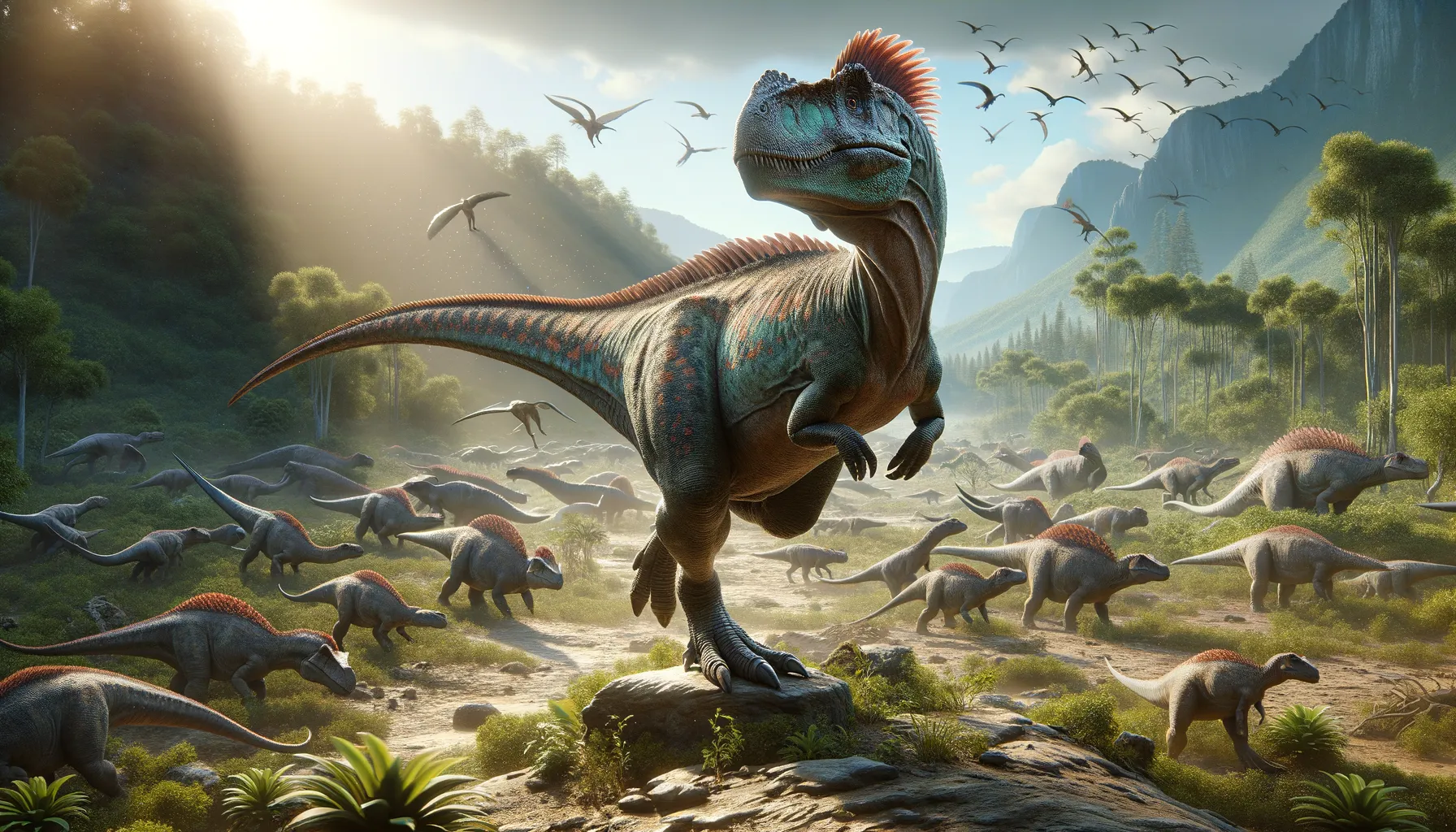
Sellacoxa
The pelvic wonder of the Cretaceous!
Period
Cretaceous
Length
Around 6 meters in length.
Height
Approximately 2.5 meters tall.
Weight
Roughly 800 to 1000 kilograms.
Sellacoxa was a medium-sized herbivorous dinosaur that roamed the Earth during the Late Cretaceous period. Known for its distinctive pelvic structure, it was a member of the iguanodontids, a diverse group of plant-eating dinosaurs. It thrived in ancient ecosystems alongside a variety of other herbivores and carnivores. Its fossils, mostly found in Europe, have provided insights into the evolutionary pathways of ornithopods.
Diet
Sellacoxa was herbivorous, primarily feeding on the abundant vegetation available during the Late Cretaceous. It likely consumed a variety of ferns, cycads, and conifers, utilizing its beak to effectively clip plant material.
Hunting
As Sellacoxa was a herbivore, it did not hunt but would have foraged extensively to meet its dietary needs. It would have needed to be vigilant while feeding to avoid predators.
Environmental challenges
Sellacoxa faced challenges from climate changes that affected its food supply. Fluctuations in temperature and arid conditions might have forced it to migrate to find sufficient vegetation. Competition with other herbivores for the same resources would have been another significant challenge in its ecosystem.
Speed
Moderate, suited for short bursts.
Lifespan
Approximately 20 to 30 years.
First discovery
Identified in mid-20th century fossil beds.
Fun Facts
- Sellacoxa was a herbivorous dinosaur that lived during the Early Cretaceous period.
- The name 'Sellacoxa' means 'saddle hip,' which refers to its distinctive pelvis structure.
- It is known from limited fossil remains, most notably a partial pelvis found in England.
- Sellacoxa belonged to the group of dinosaurs called Iguanodontians, which were characterized by their beak-like mouths and thumb spikes.
- This dinosaur was a biped, meaning it mostly walked on two legs, but it could also probably move on all fours.
- Sellacoxa shared its environment with other early Cretaceous creatures like reptiles, fish, and other dinosaurs.
- Though not well-known, Sellacoxa helps scientists understand more about the diversity of dinosaurs in the early Cretaceous period.
Growth and Development
Sellacoxa likely hatched from eggs, starting life as a small, fragile juvenile. It would have grown relatively rapidly, reaching its adult size over several years. The young would have needed to learn quickly to navigate their environment and avoid predation.
Habitat
Sellacoxa inhabited floodplains and forested regions, providing plenty of vegetation for its dietary needs. These environments offered a mix of open areas for grazing and forested regions for shelter. Seasonal changes may have influenced its movements and availability of resources.
Interaction with other species
Sellacoxa coexisted with various dinosaur species, including large predators and other herbivores. It likely engaged in competition for food with other plant-eaters while constantly being alert to potential threats from carnivorous dinosaurs.
Natural lifespan
In optimal conditions, Sellacoxa might have lived for about 20 to 30 years.
Reproduction
Sellacoxa reproduced by laying eggs, likely in a communal nesting site. Parenting behaviors might have included protecting the nest from predators and possibly guarding the hatchlings.
Social behaviour
Sellacoxa may have traveled in herds, providing safety in numbers from predators. Herding behavior would also facilitate finding food and migrating through different environments. Communication within the herd was essential for coordinating movements and alerts.
Fossil locations
Sellacoxa fossils have primarily been uncovered in Europe, in regions that were once part of extensive floodplains during the Late Cretaceous. These fossils have been crucial for understanding its place in the iguanodontid lineage and offer key insights into the diversity of dinosaurs in these areas.
